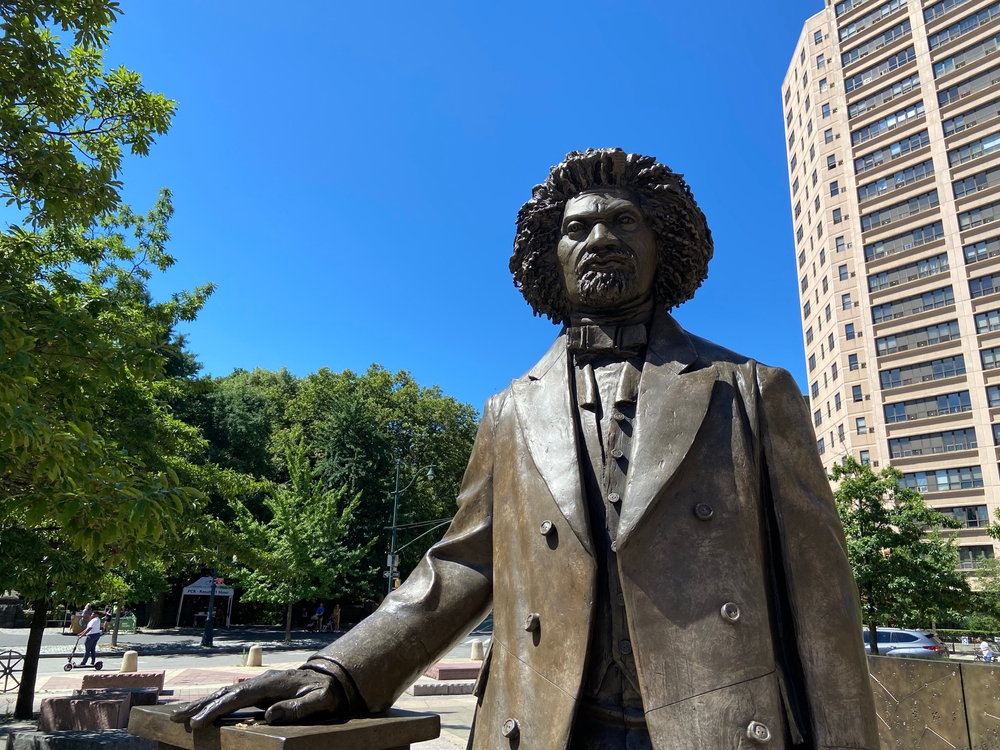In academia and culture alike, it has become fashionable to dismiss the principles associated with American independence as shortsighted at best and intentionally exclusionary at worst. “Neither Jefferson nor most of the founders intended to abolish slavery,” wrote Nikole Hannah-Jones in the New York Times Magazine debut of the 1619 Project in August 2019. The American experiment, it is often suggested, was designed exclusively to preserve the status of white, Southern planters.
Hannah-Jones is far from the first person to have thought this. In fact, she was 165 years late to the conversation.
The early American abolitionists wrestled with the idea of the Constitution as a document that allowed slavery to proliferate. In time, however, the abolition movement largely came to a consensus that the principles of American independence are, and have always been, principles for all humanity.
It was an especially hot day in Framingham, Massachusetts, on July 4, 1854. The crowd that had gathered for an Anti-Slavery Independence Day rally was sweating profusely. The oppressive heat didn’t deter the turnout, however. The Liberator reported that people had gathered in “almost unprecedented numbers” with “great unanimity and enthusiasm.”
Earlier that spring, the abolition movement had suffered its latest defeat. The recently passed Kansas-Nebraska Act repealed the Missouri Compromise of 1820, allowing for slavery’s expansion into the northern territories. Among the outraged was the fiery William Lloyd Garrison, who rose to speak during the Independence Day rally.
“Today, we are called to celebrate the seventy-eighth anniversary of American Independence,” Garrison observed to an animated audience. “In what spirit? With what purpose? To what end?” As the speech went on, the crowd watched in astonishment as Garrison worked himself into a frenzy, declaring that the presence of American slavery had contaminated the noble cause of independence.
At the crescendo of his speech, Garrison picked up a copy of the Constitution and declared that the document was “the parent of all other atrocities—‘a covenant with death, and an agreement with hell.’” The crowd then watched, to the offense of some and the glee of others, as Garrison torched the document without a second thought. As flames engulfed the parchment, he proclaimed to the crowd: “So perish all compromises with tyranny!”
By this point, Garrison had long embraced the belief that the Constitution was a pro-slavery document responsible for slavery’s growing influence over the United States—a view that has persisted well into the 21st century. But much to his frustration, this was not a perspective shared by all his abolitionist colleagues.
Just over a year before the controversial Framingham rally, Garrison arrived at a Christian Anti-Slavery convention in Cincinnati to offer what was recorded as a series of “peculiar” resolutions. Suggesting that abolitionists should completely divorce themselves from union with slaveholders, politically and religiously, he faced considerable pushback from his own mentor, Rev. John Rankin.
Rankin, well respected in abolitionist circles before the Civil War, was often dubbed the “father of abolition” by his peers. Indeed, Garrison himself considered Rankin to be his “anti-slavery father.” He credited Rankin’s Letters on American Slavery for pushing him to embrace the abolitionist cause in the first place. So when Rankin sparred with his pupil over the anti-slavery or pro-slavery nature of the Constitution, it weighed heavily on Garrison.
Rankin wasn’t alone in his opposition to Garrison’s moral absolutism. Throughout the 1850s, Garrison increasingly found himself in the minority among his colleagues: abolitionists were beginning to embrace the Founders and the Constitution as their greatest weapon in the fight against slavery.
When the Senate was debating the Fugitive Slave Act of 1850, then-Senator Salmon P. Chase of Ohio invoked the Founders (specifically Jefferson) in his opposition to the bill. The American Revolution “was waged not to vindicate privileges, but rights; not the rights of any part or class of the people, but the rights of all men —‘the rights of human nature.’” Furthermore, he argued, Jefferson’s influence on the Northwest Ordinance of 1787, which prohibited slavery from the territory, “proved that the declaration of 1776 was not an empty profession, but a true faith.”
It was this “true faith” that Chase argued was the intended nature of the United States. The Northwest Territory represented a glimpse of the anti-slavery society they envisioned America would one day become.
To drive his point home, Chase offered the following hypothetical scenario: “If a stranger from some foreign land should ask me for the monument of Jefferson … I would ask him to accompany me beyond the Alleghanies, into the midst of the broad Northwest.” This, Chase claimed, was his true legacy. “His memorial is over all our western land.”
Chase wasn’t the only one in the Senate who wielded the spirit of ’76 in his crusade against slavery. His Massachusetts ally, Senator Charles Sumner, rose in May 1852 with a resolution to repeal the Fugitive Slave Act of 1850. In a speech that quickly spread across the country, he expressed his belief that, “according to the true spirit of the Constitution, and according to the sentiments of the [founding] fathers, freedom, and not slavery, is national; while SLAVERY, and not freedom, is sectional.” Freedom, in other words, was declared the rule under the American system, and slavery the exception.
Sumner’s “Freedom National; Slavery Sectional” speech embraced decades of anti-slavery principles that men like Rankin went through great trouble to advance. Unlike Garrison’s moral absolutism, which served only to alienate his fellow abolitionists, the founding spirit of independence invoked by Sumner, Chase, and others tied the anti-slavery cause to the American ethos.
Among those persuaded by this spirit was none other than Garrison’s own pupil Frederick Douglass. Born into slavery circa February 1818, Douglass made a legendary escape from bondage in 1838. Garrison took Douglass under his wing in 1841, after hearing the story of his life under slavery during an anti-slavery meeting in Nantucket, Massachusetts.
At first, Douglass was happy to embrace Garrisonian abolitionist doctrine. But, always an independent thinker, Douglass’ mind “had undergone a radical change” by the 1850s in relation to the anti-slavery nature of the Constitution and the American founding. After “patiently investigated both sides of the matter,” Douglass rejected the view of the pro-slavery Constitution.
This intellectual transformation is most prominently articulated in one of his most notable speeches—“What to the Slave Is the Fourth of July?”
Speaking at an Independence Day meeting of the Rochester Ladies’ Anti-Slavery Society on July 5, 1852, Douglass forced his audience to confront America’s ugly contradiction. To the slave, he argues, “your celebration is a sham; your boasted liberty, an unholy license; your national greatness, swelling vanity.”
In stark contrast to Garrison’s Independence Day speech two years later, however, Douglass looked to the founding as the solution, not the root of the problem. “Their statesmanship looked beyond the passing moment, and stretched away in strength into the distant future. They seized upon eternal principles, and set a glorious example in their defence. Mark them!”
America indeed had failed to live up to those eternal principles, but Americans had the tools to fix this mistake. “As it ought to be interpreted, the Constitution is a GLORIOUS LIBERTY DOCUMENT. Read its preamble, consider its purposes. Is slavery among them? Is it at the gateway? Or is it in the temple? It is neither.”
Like a doctor after diagnosing his patient, Frederick Douglass prescribed America a cure. He challenged his audience to embrace the “eternal principles” of the founding in their fight against slavery. He and many of his abolitionist colleagues came to understand that the Constitution and the Declaration of Independence were the key in winning this fight. It’s critical that we keep this in mind while reflecting on the legacy of independence.

